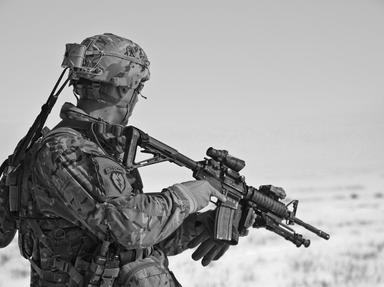Quiz Answer Key and Fun Facts
1. A certain group of Norse warriors had the ability to work themselves into a frenzy prior to battle. This fearsome behavior was such that they would bite the edge of their shields in anticipation of combat. What were these warriors called?
2. Japanese warriors were always accompanied by their swords. They had many from which to choose, but the katana was the primary weapon. What were these Japanese warriors called?
3. Over a thousand years ago, in a region that is now Korea, a martial art was developed that combined a code of ethics and the pursuit of honor. Young warriors spent their youth training to become students of the sword. They were known as what?
4. Islamic in origin, this term for a ruler means "power" or "authority". These rulers had wealth and powerful armies with weapons made of the finest metals and precious stones. By what name were these rulers known?
5. The most feared mercenaries of Old Europe were highly paid and well-trained fighters. They fought on most of the continents between the late 1400s and the late 1600s. These mercenaries were known by what name?
6. In the Congo region of Africa there once lived a group of people who were fierce warriors. They wore frightening masks and were eager to do battle. These warriors were divided into three castes. What was the name for this group of warriors?
7. In feudal Japan there was a special class of warriors who used the cover of night to carry out their deadly missions. These assassins became known as what?
8. This medieval warrior was a dominant force on the battlefield. Whether on foot or on horseback, he mastered the use of the sword in conquest and defense, all while practicing chivalry. Who was this medieval warrior?
9. Not all warriors were men. Around the first century BC, legend tells of a beautiful warrior queen of ancient Ireland. She was as ruthless as she was beautiful. By what name was she known?
10. As the dark ages of mass migration ended, Europe witnessed the formation of states and the rise of monarchies. Who were the men at the head of these monarchies?
Source: Author
nmerr
This quiz was reviewed by FunTrivia editor
stedman before going online.
Any errors found in FunTrivia content are routinely corrected through our feedback system.


